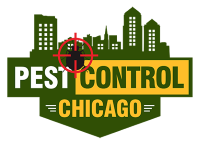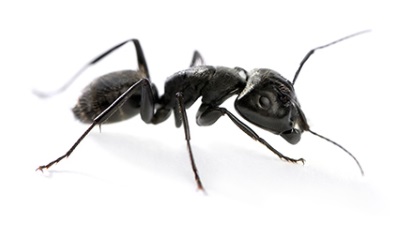Pest Control Chicago Things To Know Before You Get This
Table of Contents9 Simple Techniques For Pest Control ChicagoPest Control Chicago for DummiesRumored Buzz on Pest Control ChicagoPest Control Chicago for BeginnersPest Control Chicago Fundamentals ExplainedPest Control Chicago Things To Know Before You Buy
Planting or collecting a plant before (or after) an insect exists lowers bug damage by avoidance. Trapping and calculating a bug's expanding level days can help with preparing around a parasite's lifecycle. Damage tolerance can occasionally be accomplished by planting a crop early to ensure that the plants are stronger, much more resistant, and a lot more tolerant to damages by the time insect parasites are existing.
By developing a little, controlled area that the insects like, it is possible to draw away parasites away from the main crop. 2 strategies for this are catch cropping and strip harvesting. is growing a recommended host plant of an insect pest near the key plant that is to be secured.
If needed, the bugs can then be killed in the trap crop. Catch plants can be any type of varieties that the parasite preferseven be the exact same varieties as the primary plant - Pest treatment professionals in Chicago. If the catch plant coincides varieties as the key crop, it needs to be grown at once that will best draw the pest far from the main plant
Examine This Report about Pest Control Chicago
 This technique works when collecting a catch plant because it preserves some habitat for the parasite. Consequently, the insect does stagnate to discover new habitat in a surrounding greater value or more at risk plant. https://ameblo.jp/pstc0ntrlchg/entry-12867425575.html. The techniques already pointed out focus on lowering crop exposure to insect parasites, yet it is additionally possible to decrease return loss also when insect damage takes place
This technique works when collecting a catch plant because it preserves some habitat for the parasite. Consequently, the insect does stagnate to discover new habitat in a surrounding greater value or more at risk plant. https://ameblo.jp/pstc0ntrlchg/entry-12867425575.html. The techniques already pointed out focus on lowering crop exposure to insect parasites, yet it is additionally possible to decrease return loss also when insect damage takes placePlant them properly and maintain the plants healthy by thoroughly sprinkling, fertilizing, and pruning them. If a bug or disease creates inappropriate damage in spite of preventative efforts, pick a reliable management method that will have the least amount of effect on various other living animals and the setting.
How Pest Control Chicago can Save You Time, Stress, and Money.
 Look for symptoms the plant shows as an outcome of insect task. Analyze your plants frequently. Determine your plants to be sure that the twisted leaves, uncommon coloration, or strange-looking frameworks you see are not a normal component of the plant. Attempt to rule out site-related troubles by making certain that the dirt kind, drainage problems, fertility level, and other ecological conditions agree with for the plant.
Look for symptoms the plant shows as an outcome of insect task. Analyze your plants frequently. Determine your plants to be sure that the twisted leaves, uncommon coloration, or strange-looking frameworks you see are not a normal component of the plant. Attempt to rule out site-related troubles by making certain that the dirt kind, drainage problems, fertility level, and other ecological conditions agree with for the plant.Pests and termites usually are connected with specific plants, and they adhere to specific advancement and behavior patterns as the season advances. Usage recommendation publications from the collection or yard facility to determine parasites. If you can't locate an exact summary there, speak with a person in your regional expansion office. Discover about the pest's life cycle, actions, and all-natural enemies.
If so, an application of a nonselective insecticide can eliminate them, permitting the pest population to rebound uninhibited by killers and bloodsuckers, which may have been giving considerable control. If a control is required, think about physical or biorational techniques initially. If they are not available or unwise, you may require to meticulously use a conventional chemical control.
The Of Pest Control Chicago
 For instance, some aphids and termites can be ripped off by spraying the plant with water. Bagworm larvae can be picked off a plagued plant. You can utilize catches to catch particular pests, and obstacles to shield plants from insect assault or condition infection. One effective method for regulating gypsy moth larvae on small numbers of trees is to put a band of folded up cloth around the tree trunk to provide a man-made resting website for the caterpillars, and afterwards destroy the caterpillars that collect there.
For instance, some aphids and termites can be ripped off by spraying the plant with water. Bagworm larvae can be picked off a plagued plant. You can utilize catches to catch particular pests, and obstacles to shield plants from insect assault or condition infection. One effective method for regulating gypsy moth larvae on small numbers of trees is to put a band of folded up cloth around the tree trunk to provide a man-made resting website for the caterpillars, and afterwards destroy the caterpillars that collect there.Sometimes, the most effective remedy might be physically removing the plant and replacing it with one that will certainly not be impacted by the bug or disease. Thinning crowded plants to enhance air blood circulation can lower numerous disease problems. Biorational approaches can be separated right into two groups. The first team consists of living microorganisms that can kill the insect.
Bloodsuckers survive and often kill an additional microorganism, called the host. Some parasitical wasps use caterpillars, whiteflies, aphids, and soft ranges as hosts. An example of an approach that uses a naturally occurring biochemical is the microorganism Bacillus thuringiensis (Bt). Bt contains a protein that is harmful to particular bugs, yet safe to various other microorganisms.
The Single Strategy To Use For Pest Control Chicago
When the sensitive bug pest feeds upon the splashed fallen leaves, it will ingest the healthy protein and be killed. Standard chemicals are utilized just as a last resource in an IPM program, yet often are one of the most efficient methods of control. To have the biggest effect, these materials require to be used on a particular component of the plant when the pest is most susceptible.
Oftentimes, eco secure chemicals such as horticultural oil or insecticidal soap work selections - https://www.awwwards.com/pstc0ntrlchg/. Once more, applications have to be timed meticulously to go to my site have the best effect on the parasite insect populace. Due to the fact that they have no recurring activity after they have actually dried out, soaps and oils are usually the alternative that is the least turbulent to populations of useful organisms
These words, from least harmful to most toxic are: "care," "warning," and "threat." Utilize these words as guidelines to aid you choose the least harmful product among the efficient options. For most landscape pests, you need to take into consideration pesticides in just the initial two categories. Some chemical solutions can be used just by applicators with unique training and who are certified by the state's division of agriculture.
The smart Trick of Pest Control Chicago That Nobody is Talking About
Describe the Woody Ornamental Bug, Termite, and Condition Management Guide, published by Penn State Extension, or to one more current reference for a checklist of products that are signed up for use on plants in your state. Check out the label to make sure that you have actually selected an item that is reliable versus the pest you have actually recognized, and select your timing based on expert referrals.